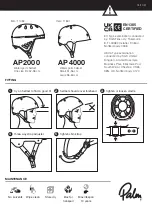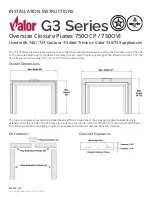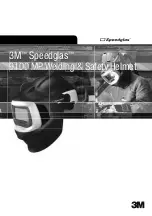
© Baader Planetarium GmbH | 2020
13
Attaching camera-lenses by their front-lens filter threads
Most camera lenses attach onto the Mark IV (or any Hyperion
®
or Morpheus
®
eye-
piece) by using the Baader SP54-system-thread, together with a whole family of
Hyperion
®
DT-Rings. For this system, the adapter M43/SP54
# 2958086
is available,
which fits directly onto the Mark IV. This SP54 adapter is the base to adapt the Mark
IV onto all common camera lenses with a filter thread and allows to use any such lens
and camera for afocal projection imaging.
The SP 54 step-rings for making this system most versatile are called „Hyperion
®
DT-
Rings“. Choose the appropriate adapter from SP54 onto the filter thread of your lens
by reading the tread size at the engravement around the front lens of your camera-
lens . Following SP54 step-rings are available:
SP54 to
M28
:
# 2958028
(requires also
# 2958090
)
SP54 to
M37
:
# 2958037
(requires also
# 2958090
)
SP54 to
M46
:
# 2958046
SP54 to
M49
:
# 2958049
SP54 to
M52
:
# 2958052
SP54 to
M55
:
# 2958055
SP54 to
M58
:
# 2958058
SP54 to
M62
:
# 2958062
For more information, please visit:
www.baader-planetarium.com/en/eyepiece-accessories
These step-rings are designed to ensure the shortest possible dis-
tance between eyepiece and camera front lens. This is crucial to reduce
or completely avoid vignetting. The M62-ring can even serve as base for
larger Hyperion
®
stepper-rings to adapt lenses with up to 82 mm front
filter threads – but the spacing increases and the eyepiece / camera
distance becomes less optimal.
For cameras with M43-thread, we recommend to use the M43 Exten-
sion Ring
# 2954250
to gain some safety distance, in case there is a risk
that the lenses of the camera and eyepiece may touch (see image to the
right). Check for correct spacing of the connection before threading cam-
era lens and Mark IV completely to avoid damage to your valuable camera lenses.
Digiscoping-overview
There are numerous possible combinations for attaching
a camera and many things to consider. Under the name
digiscoping, this technique is also popular with animal lovers
today, who take pictures with a spotting scope and do not
need an additional, heavy telephoto lens.
All important combinations and the formulas for calculating
the achievable focal lengths can be found in our Digiscoping
brochure. You can obtain it from your specialist dealer or as a
PDF under
www.baader-planetarium.com/en/digiscoping


































